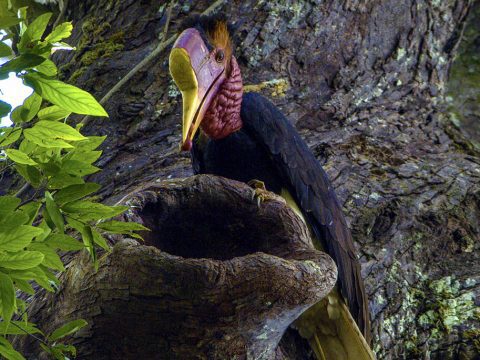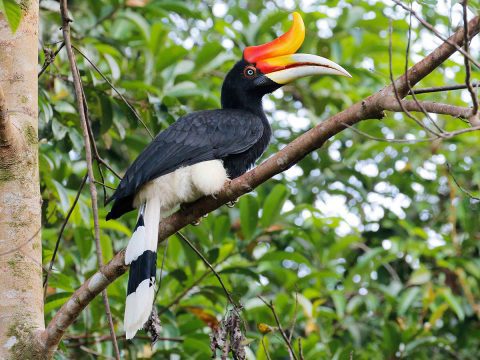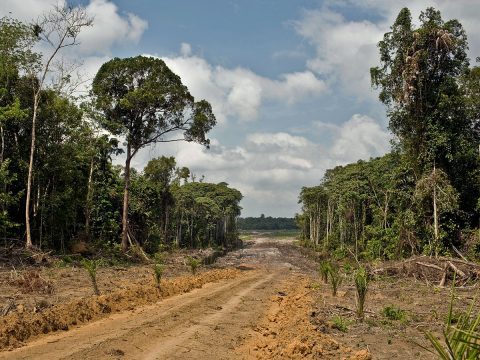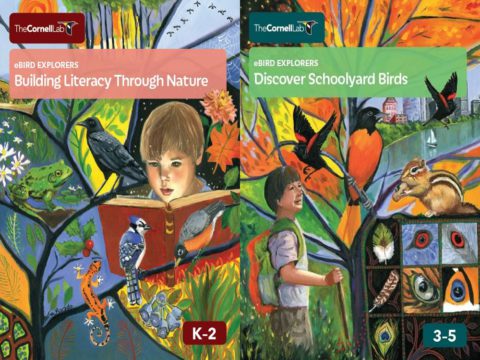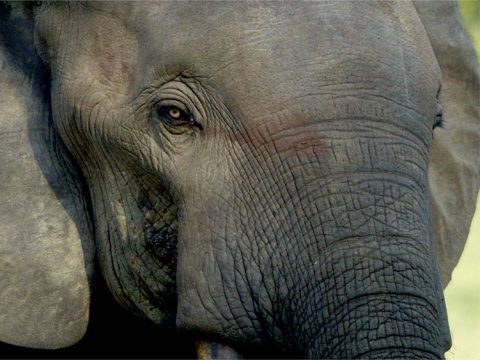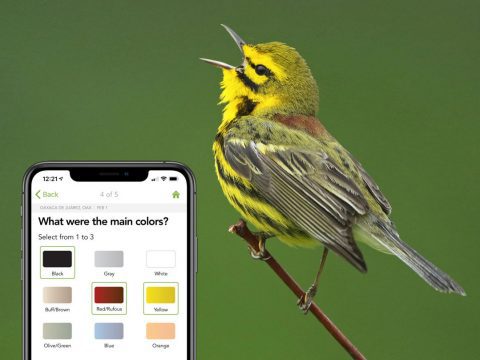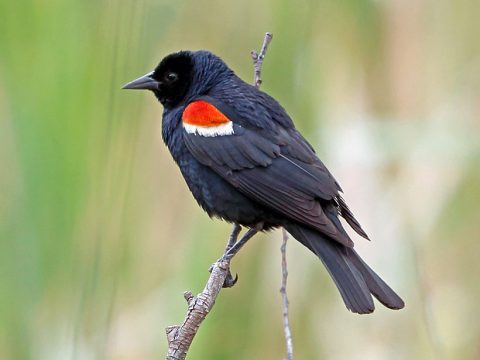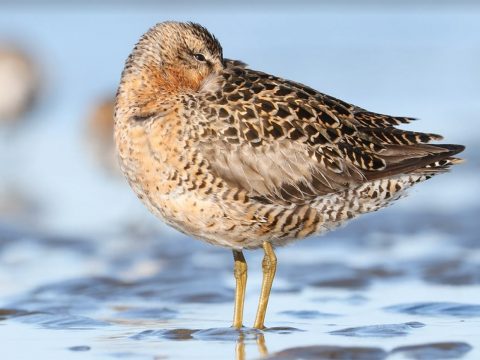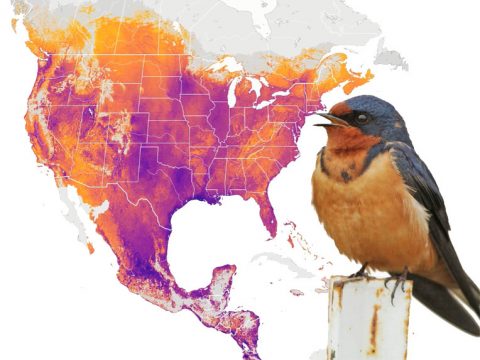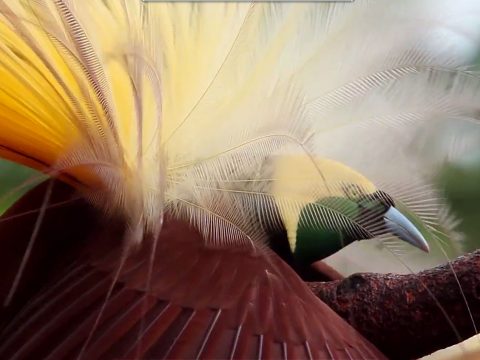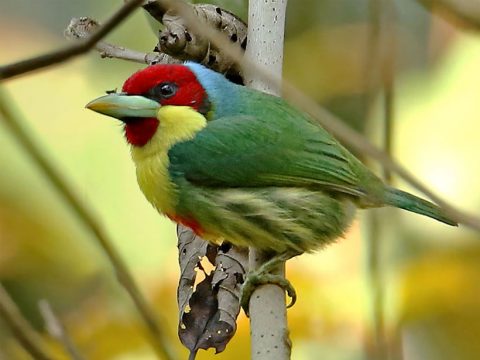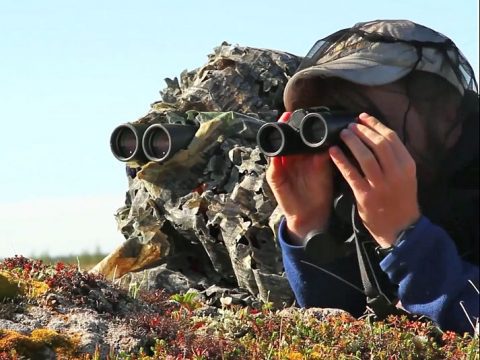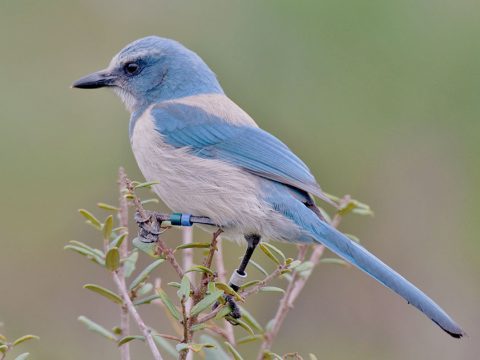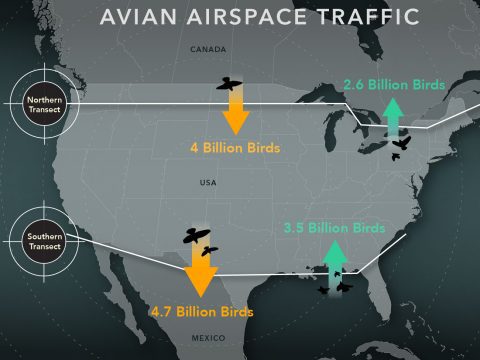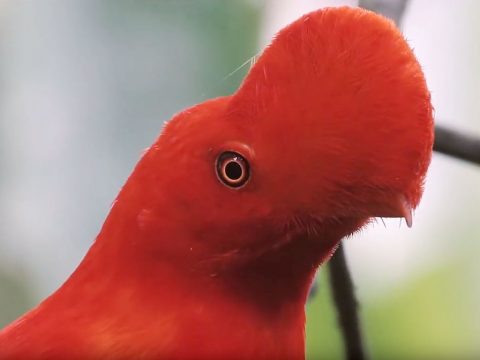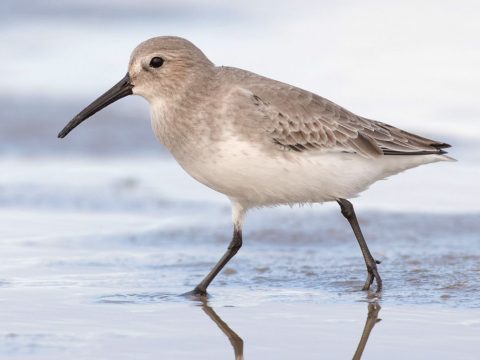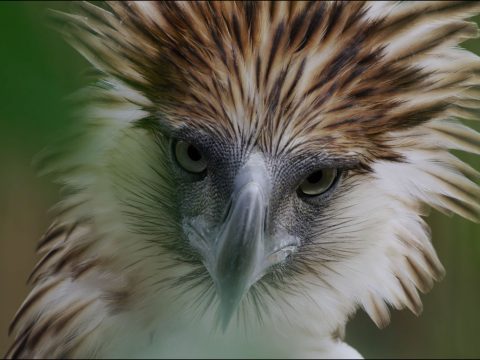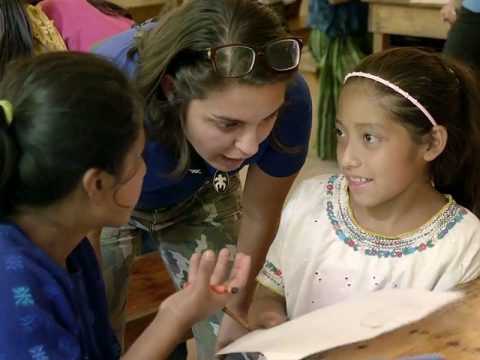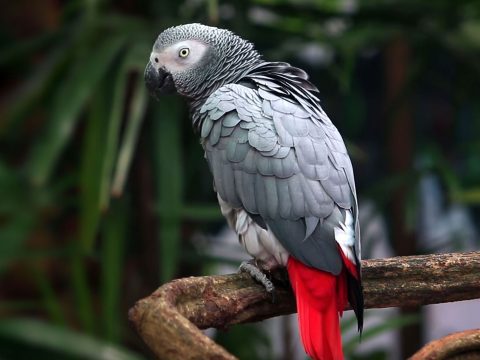Safeguarding the Helmeted Hornbill—A Living Treasure, and a Target of Poachers
YOKI HADIPRAKARSA: My name is Yoki Hadiprakarsa. I am a wildlife and ecology specialist. I’m heading up the forest interior in Borneo with the biologist and photographer, Tim Laman. It is a three-hour journey, deep into one of the last remaining tropical rainforests in Indonesia. We heard about a possible nest site for a rare bird that has become critically endangered…almost overnight.
TIM LAMAN: Nice to meet you. [local men reply in native language].
LAMAN in native language: Have you checked the nest site today? [LOCAL MEN, native language: Yes]
LAMAN in native language: See any birds? [LOCAL MEN, native language: No, I didn’t see any. Nothing since 5 am.]
HADIPRAKARSA: Listen…Yes!
LAMAN: So…(focus on tree cavity)
HADIPRAKARSA: Yep. That one. That’s right. See?
LAMAN: You mean this, this spot there?
HADIPRAKARSA: Yes. This cavity, surprisingly, can only be found in the ancient healthy rainforest, which is in the big trees, above one-meter diameter, which is also very rare. So, that’s why, you know, for the Helmeted Hornbill, the requirement for the nest is also challenging for them. When there’s ten pairs of Helmeted Hornbills, let’s say in this area, probably only one or two are capable to breed in one season because the availability of this unique cavity as the nest, is very low.
LAMAN: That’s why this protected forest is so important with remaining old trees.
HADIPRAKARSA: Yep. Yep.
HADIPRAKARSA: There’s an adult male, Helmeted Hornbill, inspecting the nest. This is an amazing site, you know.
LAMAN: A female and a male both came to the nest cavity. She had this really amazing call. Did you hear that?
HADIPRAKARSA: Yes. [imitates call]
LAMAN: Yes, a unique call. The female was working on the entrance, for a long time, my neck is so sore!
HADIPRAKARSA: More than fifteen minutes!
LAMAN: There was a moment when the female pulled her head out and it was like they almost touched beaks.
HADIPRAKARSA: It looked perfect to me. All the better still in the camera.
LAMAN: Yeah, it looked really good. Pretty Amazing.
HADIPRAKARSA: Extraordinary. Speechless!
[counting specimens in native language]
LAMAN: This here is kind of amazing because you can see…you can still see the feathers. We have here, about…How many Yoki? We have about a hundred?
HADIPRAKARSA: A hundred.
LAMAN: Yeah. And these here are just the ones that were captured by the authorities. There are probably thousands that were estimated to have been exported from Indonesia, just in the past few years.
HADIPRAKARSA: In my estimation, it’s about six thousand Helmeted Hornbills that have been killed. In West Kalimantan, alone, in 2013, alone. In 2015, it leaped from Near Threatened into the Critically Endangered, which is one step before extinction.
LAMAN: These Helmeted Hornbills, they’ve been occupying these forests for thousands of years. This hornbill has this really unique horn on its head. That’s a solid keratin material. Local people have been hunting this bird for a long time and it’s somehow survived. So…it has learned to avoid humans. But, recently, there’s been a surge in the demand for the carved hornbill products…and this has led to kind of an industrial-scale poaching with hunters with guns. And, so, I’m trying to document this bird to show people what it’s like and try to get some more attention for it, before it’s too late.
LAMAN: Here’s some ripe figs. We finally found this fruiting fig tree. Here’s another kind of fruit, hornbills like. This is what it would look like when it is ripe and pops open. And, the hornbills would use their long beak, it’s very useful, they can reach in and pluck out the seed with the flesh on it, and leave the husk behind. And, they swallow this.
HADIPRAKARSA: This pair will mate for life. Every year they look for a hollow cavity. And, if they find one, they will clear it out and the female will seal herself in. Sometimes, thirty meters high in the canopy. The male provides all the food for her and their new born chick…until the young bird is able to fledge 150 days later.
LAMAN: Large hornbills, like this, are believed to live for forty or maybe even fifty years in the wild. So, killing a male, like this, for its horn, is removing an individual from the environment that may have twenty or thirty years of reproductive life left. So, sometimes, depending on when the male is hunted, if he’s killed at a critical time when the female is inside the nest with the chick, and maybe she’s molting, she can’t fly, can’t escape, killing a male might result in the female and the baby also losing their life.
LAMAN: Look at the similarities between this skull and casque of a male and this male I photographed in the wild. Could be the same guy.
HADIPRAKARSA: These birds know that humans are a threat. But, during the nesting period, this male’s devotion to his mate and chick, leaves him vulnerable. His bill and brow make him valuable, for all the wrong reasons. How can we lose something like this so quickly? How can we let these ancient creatures disappear?
End of Transcript
The Helmeted Hornbill is one of 57 hornbill species in Africa and Asia. It’s found only in the lowland rainforests of Brunei, Indonesia, Malaysia, Myanmar, and southern Thailand. These huge, breathtaking birds have a spectacular casque—the horny helmet above the beak—which is substantially softer than ivory and easily carved. Sadly, poachers kill the birds to sell the casques which are in high demand in Asia for beads, pendants, and intricate works of art.
Because of illegal poaching, Helmeted Hornbills are now critically endangered. Your support enables our Conservation Media program to raise urgent awareness of the plight of hornbills and other imperiled birds in order to stem their declines.
More Stories
 Conservation in ActionHow We Use Sound to Help Protect Elephants from Poaching
Conservation in ActionHow We Use Sound to Help Protect Elephants from Poaching Conservation in ActionCalifornia Protects Tricolored Blackbird After eBird Data Help Show 34% Decline
Conservation in ActionCalifornia Protects Tricolored Blackbird After eBird Data Help Show 34% Decline Conservation in ActionCoastal Solutions: Building a Bold New Community to Address the Shorebird Crisis
Conservation in ActionCoastal Solutions: Building a Bold New Community to Address the Shorebird Crisis Conservation MediaBirds-of-Paradise Help Inspire Conservation of Forests in West Papua
Conservation MediaBirds-of-Paradise Help Inspire Conservation of Forests in West Papua Conservation in ActionHow Can a Great Cup of Coffee Support Birds, Farmers, and Local Communities?
Conservation in ActionHow Can a Great Cup of Coffee Support Birds, Farmers, and Local Communities? Conservation MediaHow Can We Change Hearts and Minds to Save Wild Parrots?
Conservation MediaHow Can We Change Hearts and Minds to Save Wild Parrots?
Join Our Email List
The Cornell Lab will send you updates about birds, birding, and opportunities to help bird conservation. Sign up for email and don’t miss a thing!
Golden-cheeked Warbler by Bryan Calk/Macaulay Library

